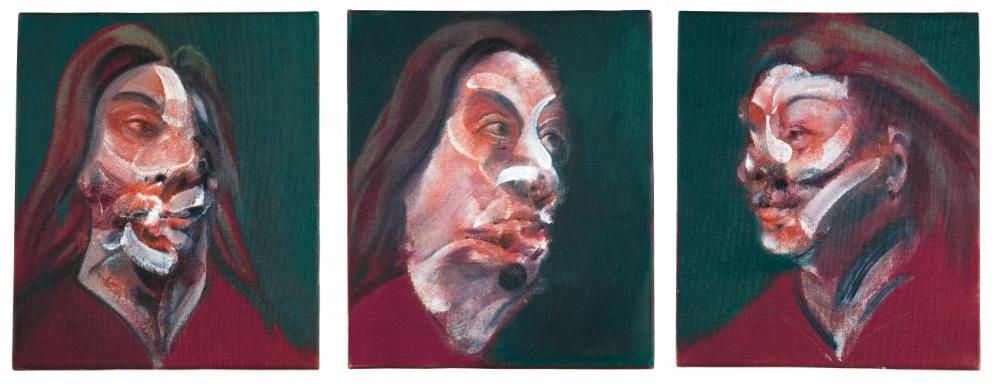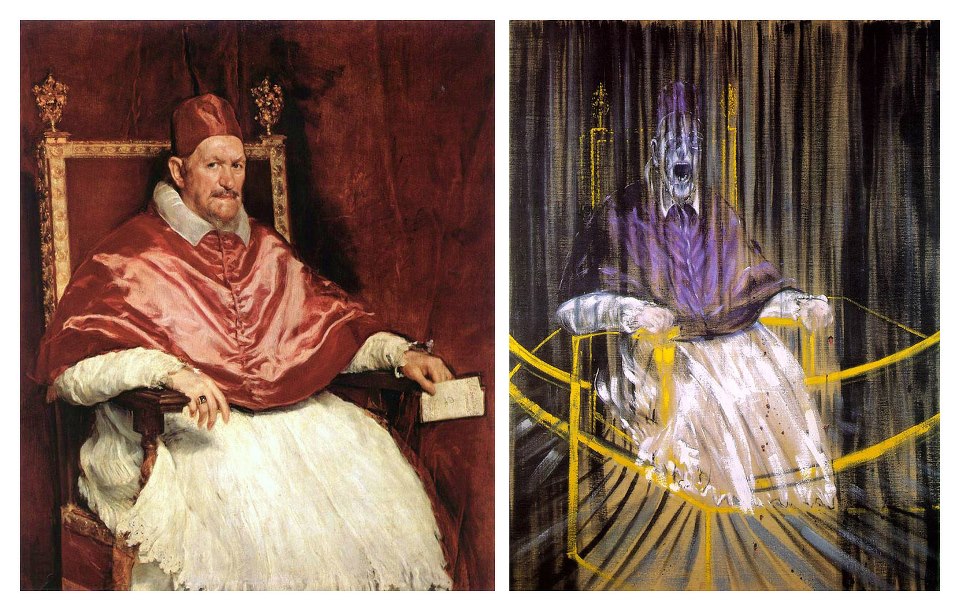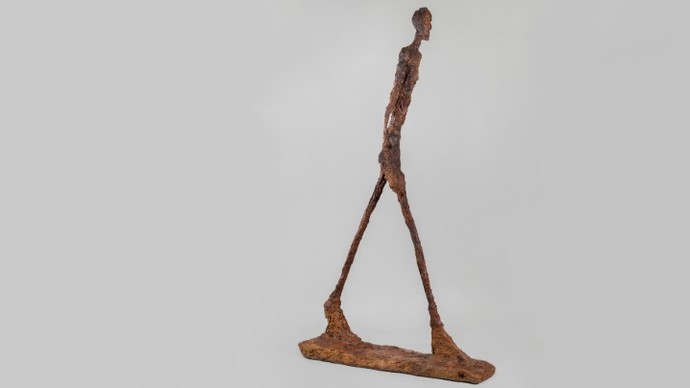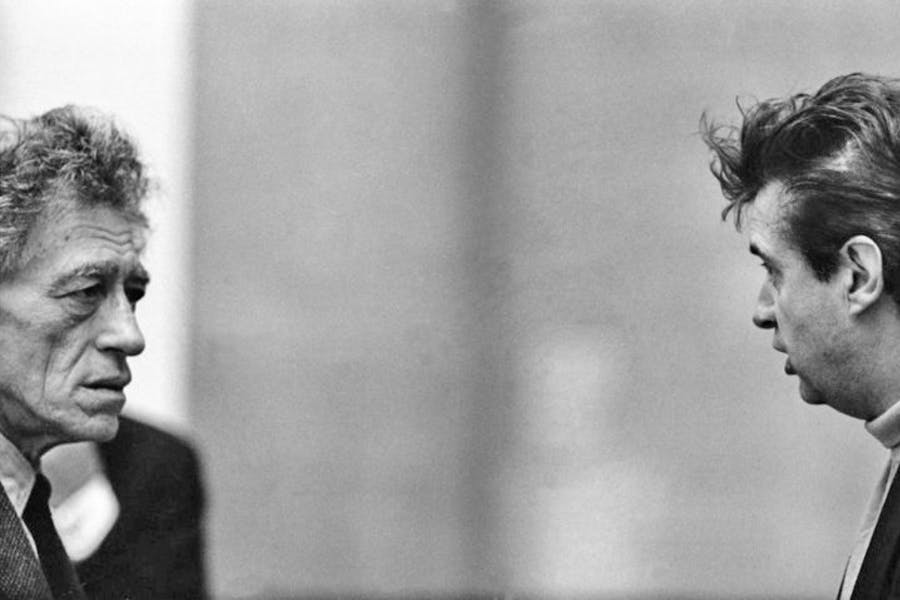Bacon’s “Three Studies of Isabel Rawsthorne”, 1966.
Image courtesy of: Francis Bacon

Bacon’s “Three Studies of Isabel Rawsthorne”, 1966.
Image courtesy of: Francis Bacon
Comparing Bacon and Giacometti, in essence highlighting their similarities and differences, is the idea behind the ambitions and enlightening new exhibition at the Foundation Beyeler. These modern masters never worked together, or considered themselves as part of the same art movement… the two only met at rather advanced ages; yet, these two geniuses’ works go hand-in-hand seamlessly!
It was a mutual friend, Isabel Rawsthorne, who introduced the artists in the early 1960s. Rawsthorne continued to be an important figure to both Bacon and Giacometti; there are several works by both artists which portray her. The artist and set designer was considered an unconventional beauty and was thought to have captured Giacometti’s vivid imagination at first sign; soon after, becoming his lover. The British Rawsthorne was portrayed by Giacometti in sculptures and by Bacon in paintings.

A Bacon painting, “Study for Portrait VII”, (1953) alongside a Giacometti sculpture, “The Nose”, (1947). The scream comes from a mouth frozen in fear in the Bacon interpretation… the sound seems to reverberate to Giacometti’s iron-enclosed, plaster head.
Although the Foundation Beyeler displays the two artists side-by-side, they are rarely shown in that mode of display.
Image courtesy of: You Tube
Ernst Beyeler, the prominent Swiss collector and founder of the Beveler Foundation, had long desired to put together this impressive exhibition with pieces from private collectors and museums from around the world. Having dealt personally with both artists, Beveler felt an affinity to making this show a reality
Two of the shows curators, Ult Kuster and Catherine Greier, first brainstormed about this possibility after a discussion at the 2015 Venice Biennale. The curators were surprised to find out that there has never been a comparative exhibition between Bacon and Giacometti hosted by a major institution. It was the perfect opportunity made possibly by Beyeler’s assistance.

“Study after Velazquez’s Portrait of Pope Innocent X”, 1953 is the furthest thing from a subtle and unbiased interpretation of Pope Innocent X. The original by Diego Velazquez shows the Pope with a grinning, lewd, expression… here’s the most powerful man in the world and a representation of God himself. Bacon takes his cues from that, dressing his Pope in drag, shacked to an electric chair and screaming grotesquely.
Image courtesy of: Kirby Kendrick
While the similarities are easier to notice, the differences are slightly more complex to decipher. Bacon loves color, even in his portrayals of grotesque figures and faces; while Giacometti’s palate is more muted with lots of grey strands.
Distortion, although a similarity of both artists is shown in a completely different way. Bacon blurred his subjects’ faces while Giacometti intended to eliminate the body of his subject… focusing almost entirely on the face.
Pain is another similarity portrayed differently. Bacon, the Irish Catholic, used triptychs throughout his career (the idea initiated from old, traditional Christian paintings) showed his figures with wailing faces and flesh hanging loose. The painter wrote in 1955, “There is no tension in a painting if there isn’t a struggle with the object.”

Giacometti’s works often reflect failure and fragility in absence of perfection. Focusing on the human head and the sitter’s glance, the subject’s expression appears to be reeling from bad news or the perverse sight of horror. There is a constant comparison between the sculpture and the space around it which feels as though it’s corroding the figure. The edges are rough and fragmented… perhaps depicting decay.

Alberto Giacometti and Francis Bacon, (1965)
Image courtesy of: Apollo Magazine, photographed by: Graham Keen
Within the airy and bright Foundation Beyeler, a beautiful building designed by Rezno Piano, this exquisite exhibition follows the two artists through life, artistic phases and progressions of torment. There aren’t any clues as to why Bacon and Giacometti were drawn to such madness; but the beauty is undeniable!